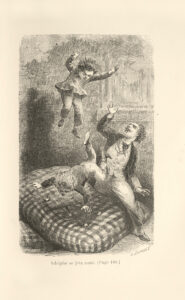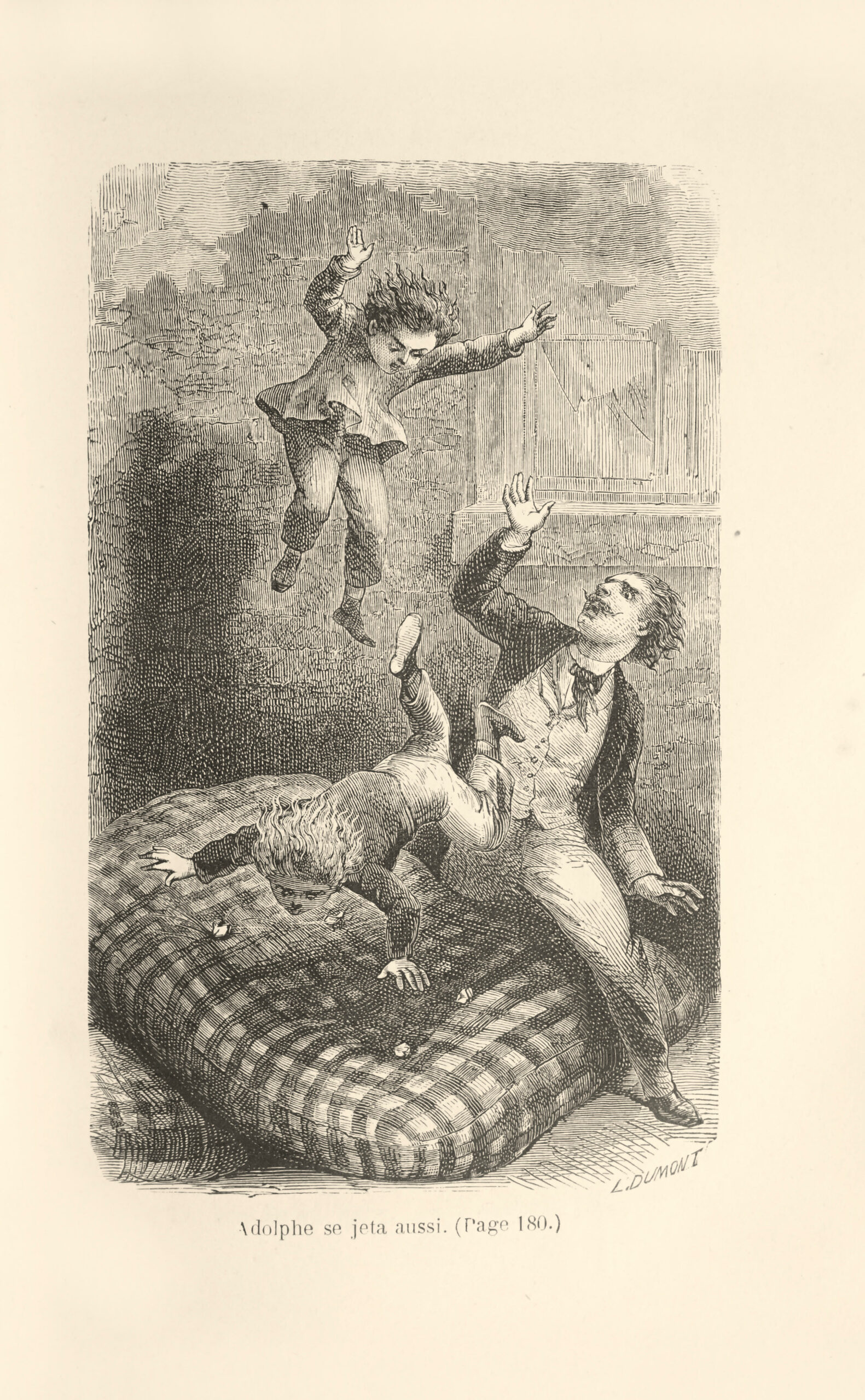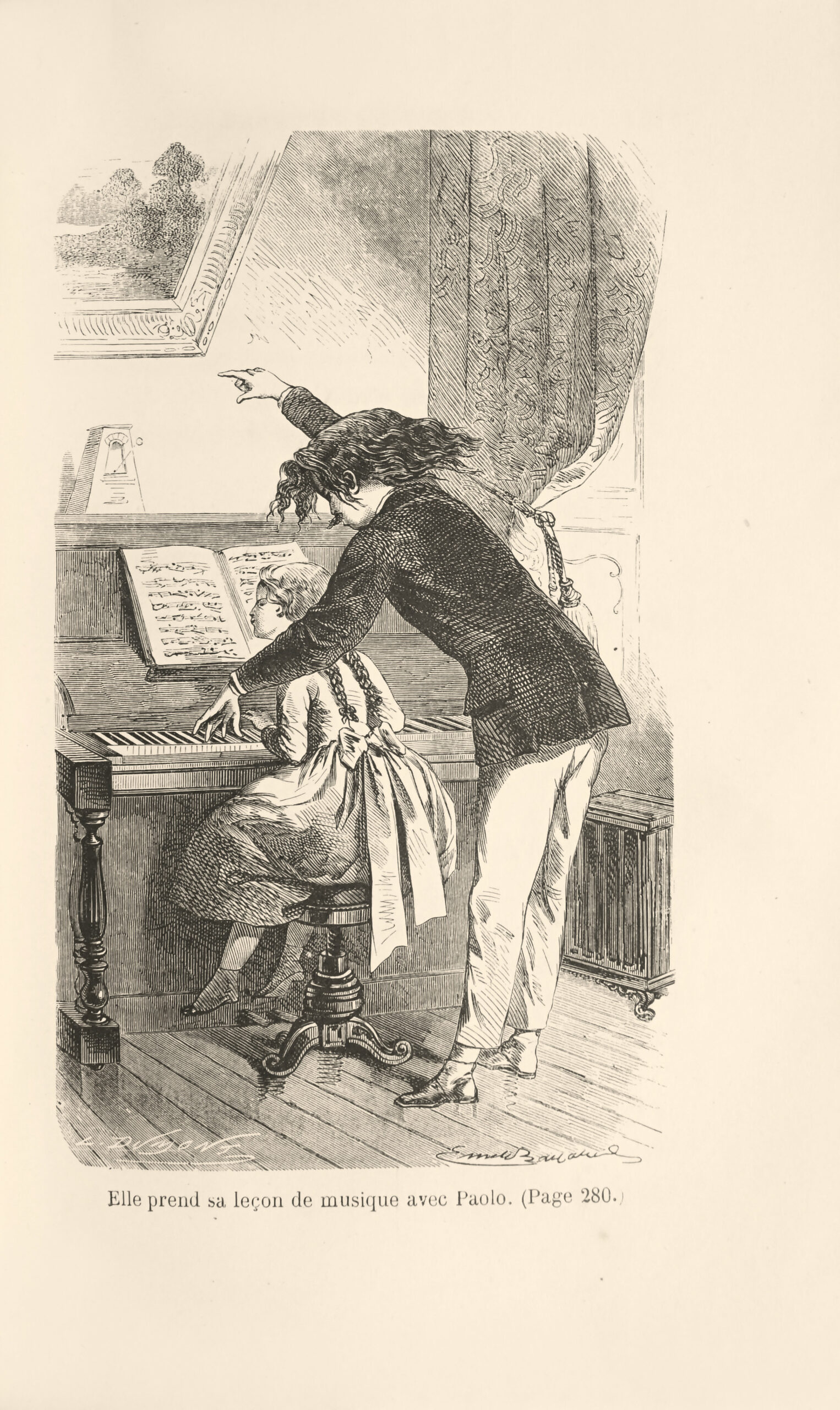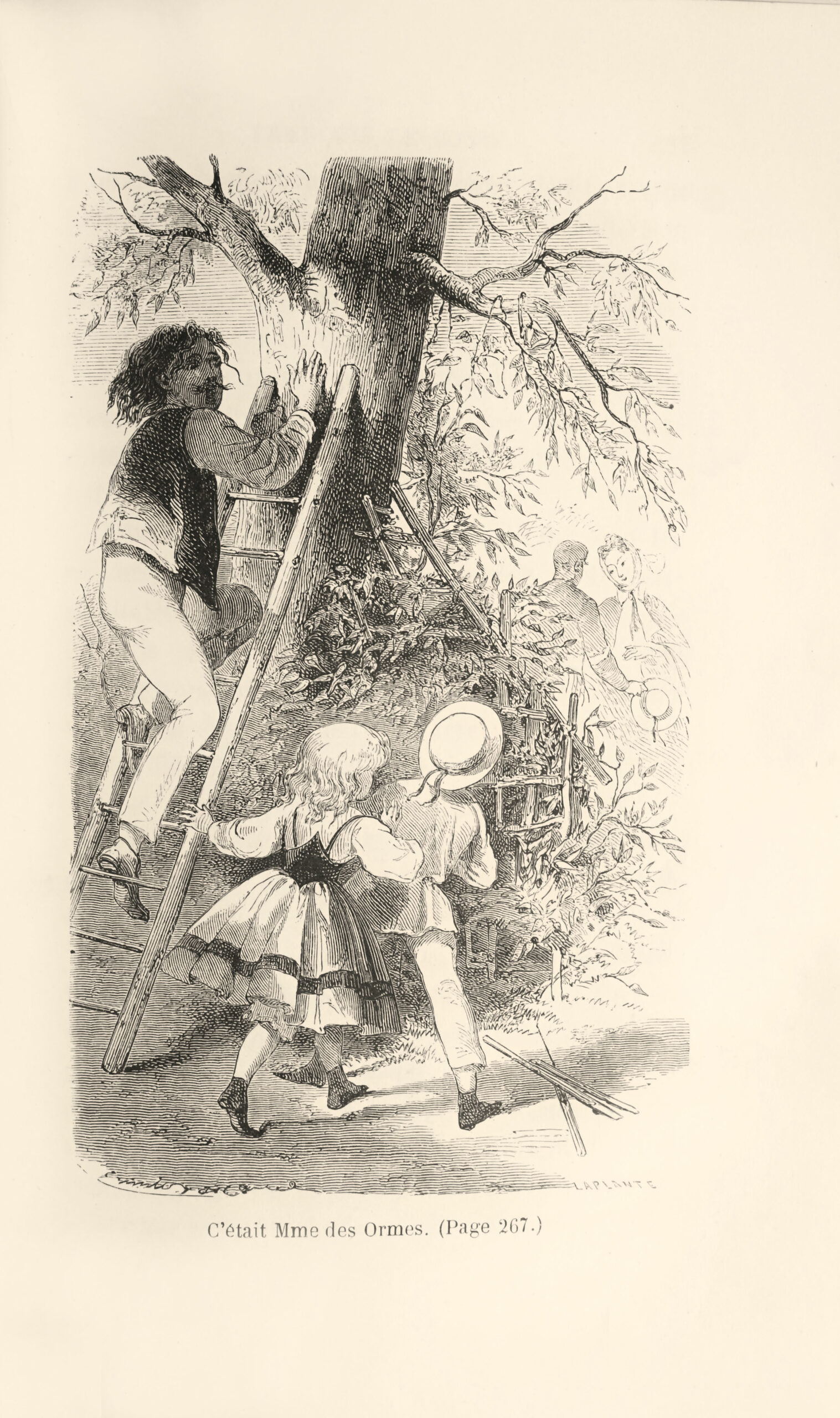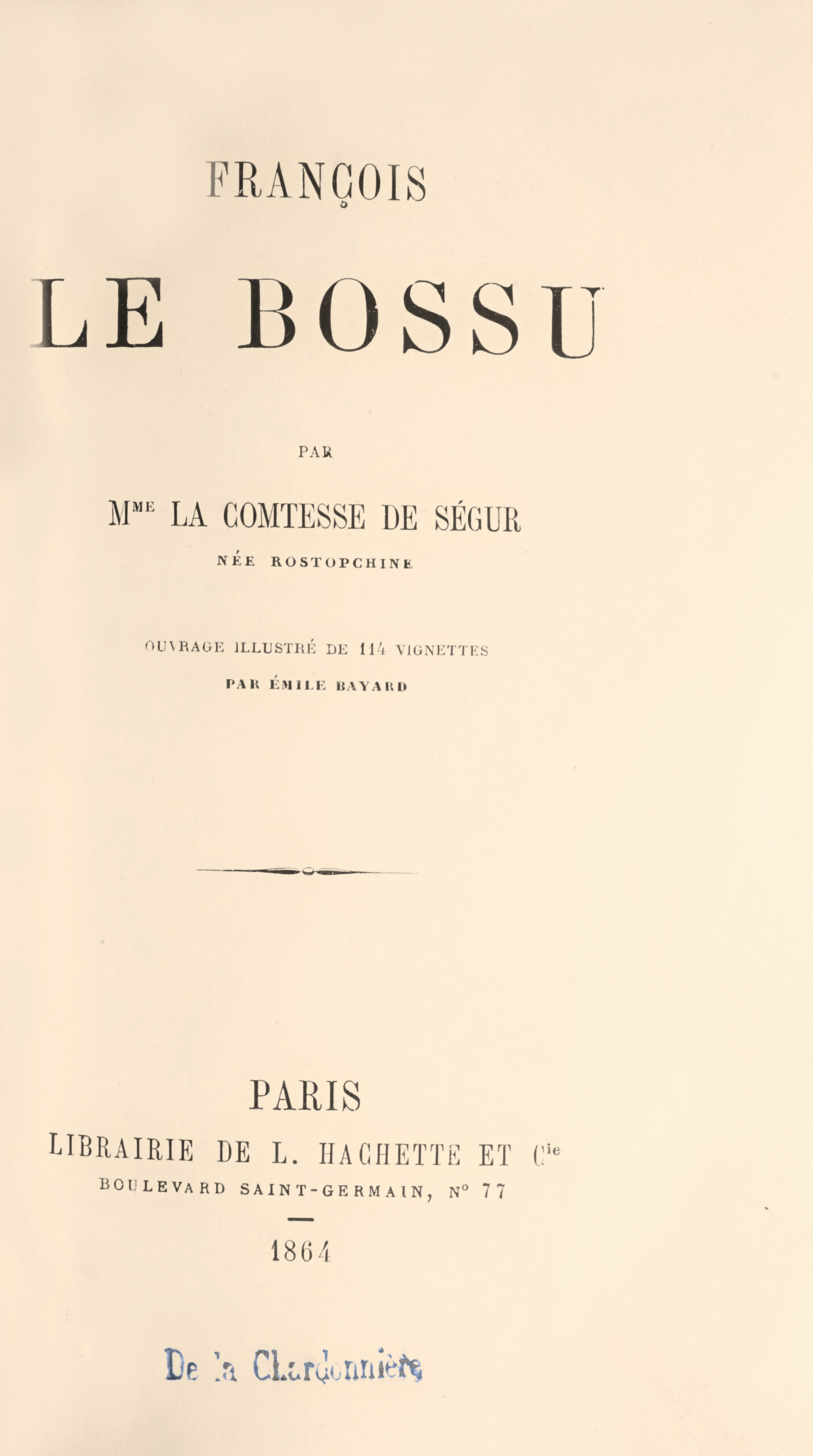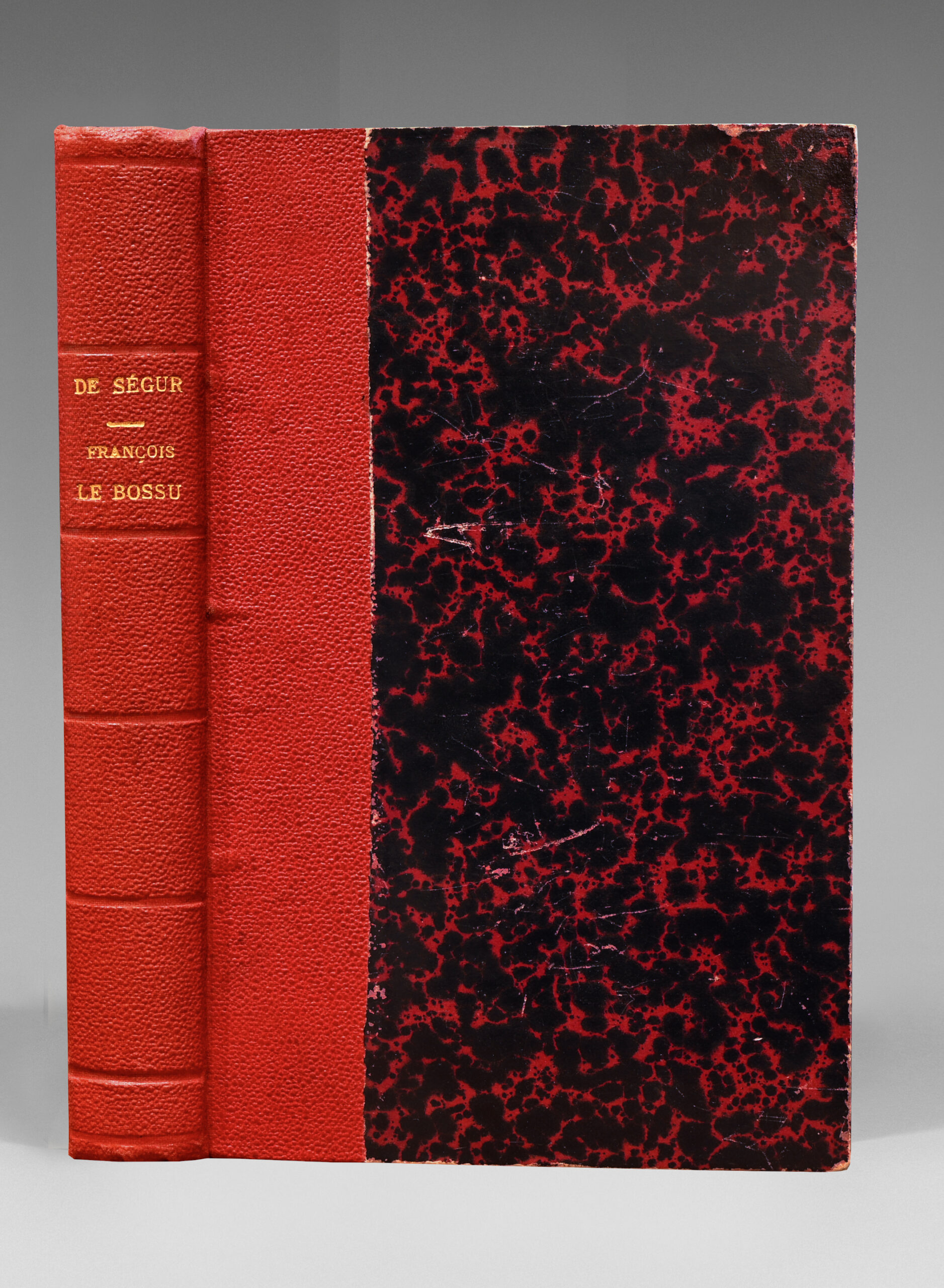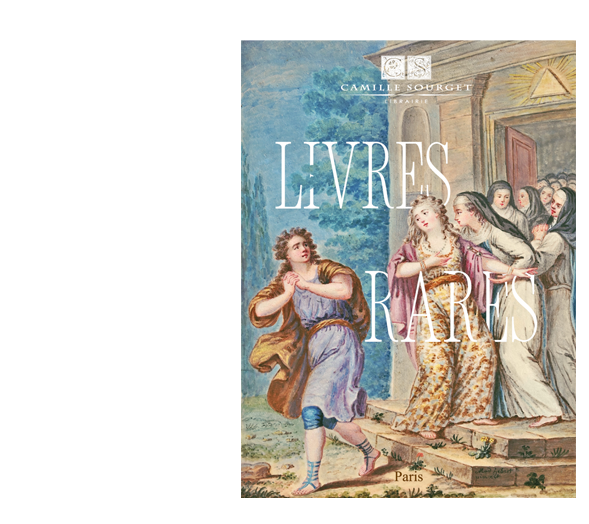Paris, Hachette et Cie, 1864.
12mo of (6) pp., 406 pp. including 28 full-pages plates, (2), usual foxing. Red half-buckram, flat spine, mottled edges. Contemporary binding.
178 x 112 mm.
First edition of the utmost rarity of this famous novel by the comtesse de Segur.
François de Nancé, a 10-year-old boy, has become hunchbacked as a result of a fall. He becomes a friend of the 6-year-old Christine des Ormes. The latter is neglected by her parents – a whimsical, cold and scatterbrained mother, a loving father under the thumb of his wife – and tormented by her maid. Christine and François, who both have excellent hearts, soon become inseparable. When the Ormes family decides to leave the countryside and move to Paris, Christine is happily entrusted to the care of M. de Nancé, where she finds the affection she has been missing.
This situation lasted until the young girl turned 16, when she had to leave her adoptive family for a while. François left to study in the south-west of France, and she was placed in a convent, then taken in by her aunt, Mrs de Cémiane. Christine and François, cured of his infirmity thanks to an operation, met up again two years later, without Christine having been informed of this success or of the change!
They got married and lived a happy and peaceful life with their father, Mr. de Nancé.
It is often considered to be one of the Countess’s darkest novels. Many dramatic events punctuate the narrative, which many adults consider too harsh for young readers: the fate of young Maurice, François’s persecutor, is so horrible that the publisher asked the author to change it, but in vain. The novel was, however, to be called La Mauvaise Mère, in reference to Christine’s mother, but this time the publisher won the case.
Like many of the Countess’ novels, this one is devoted to a critique of education, contrasting children who are too spoiled, neglected or mistreated with children who grow up in an environment that knows how to balance affection and firmness.
The countess of Segur takes up a theme dear to humanists: appearance is nothing.
The illustration comprises 28 full-page plates and numerous vignettes inside the text by E. Bayard.
A precious copy of this unobtainable first edition, preserved in its contemporary binding.
Only one copy located among French public Institutions: at the B.n.F.
